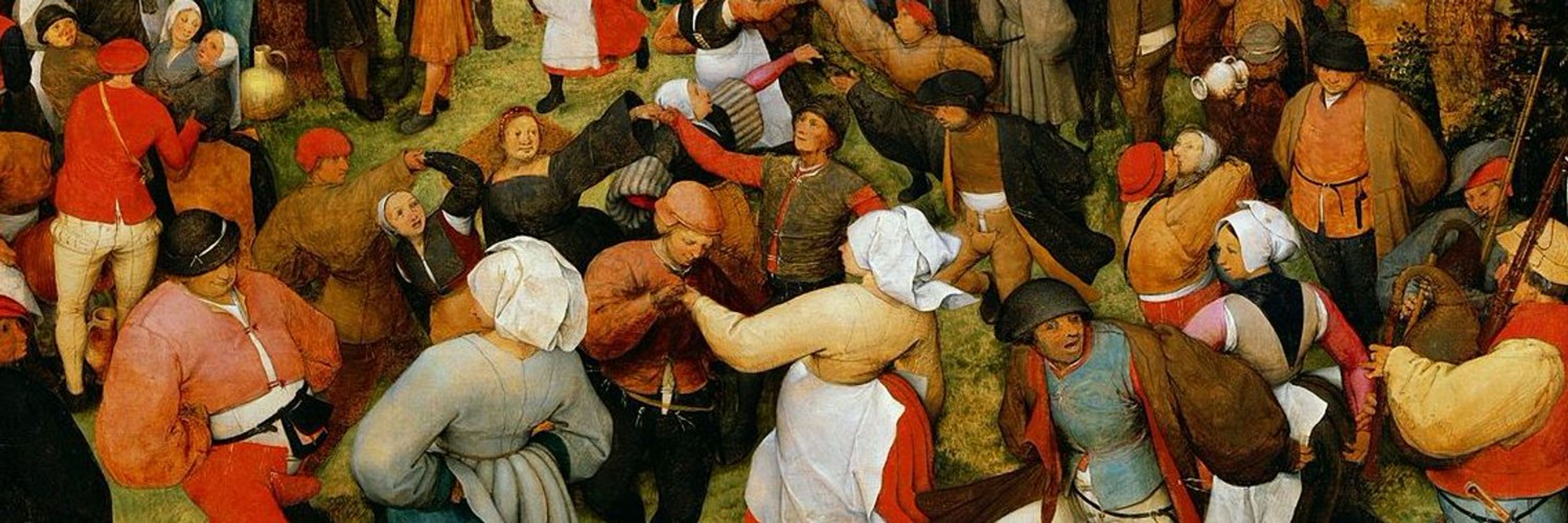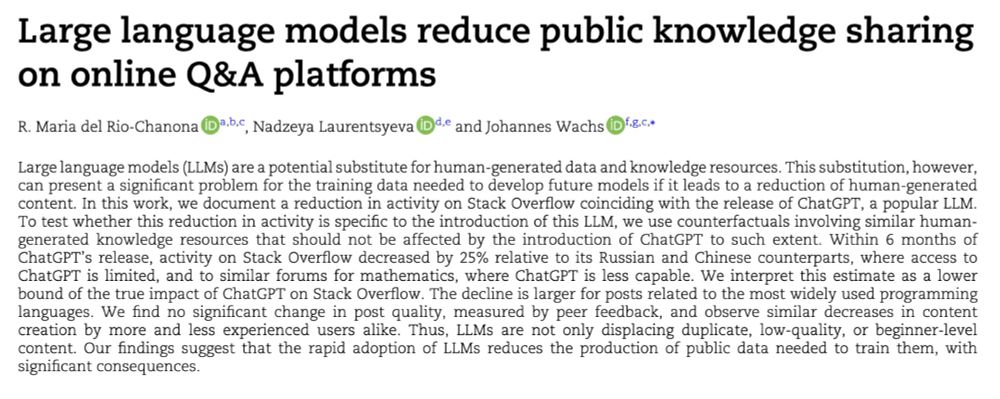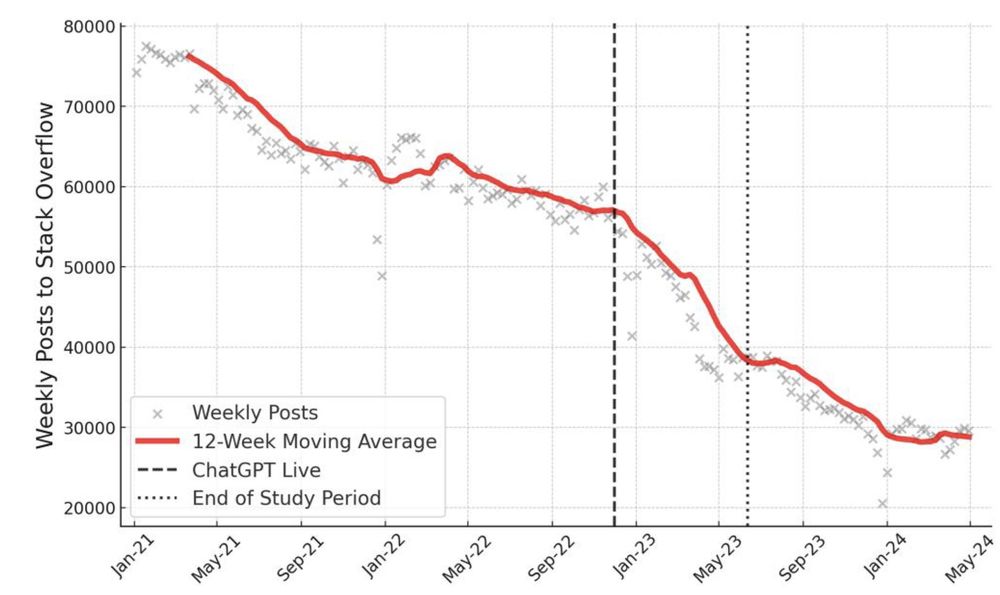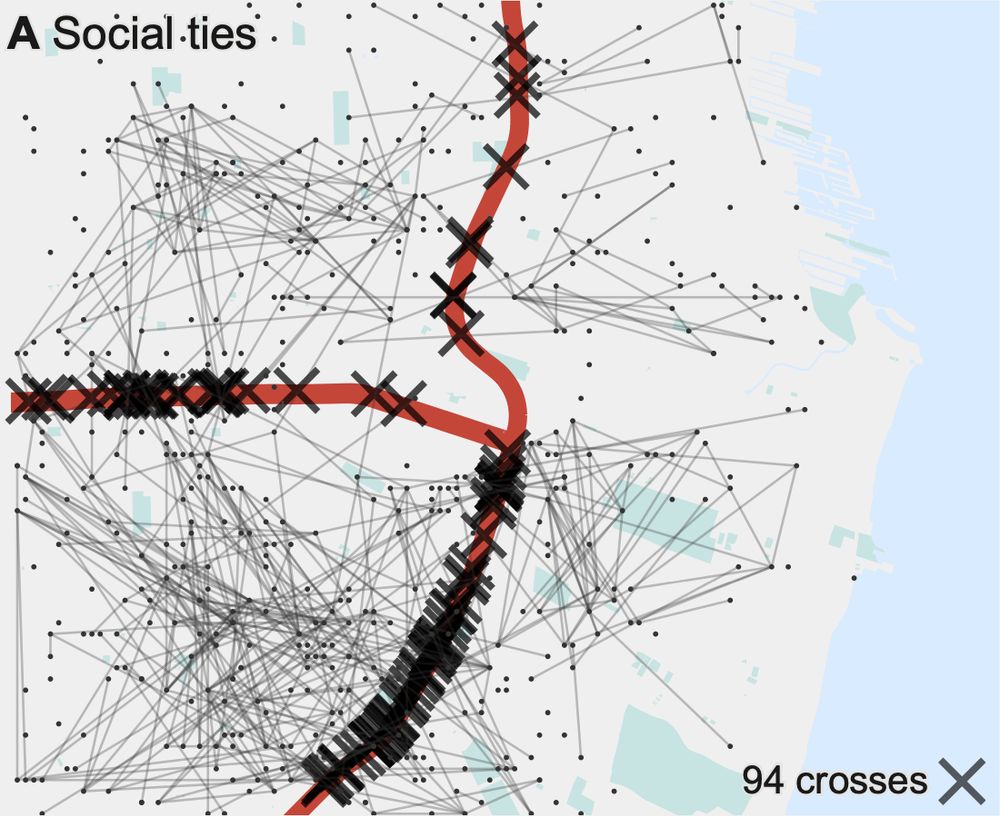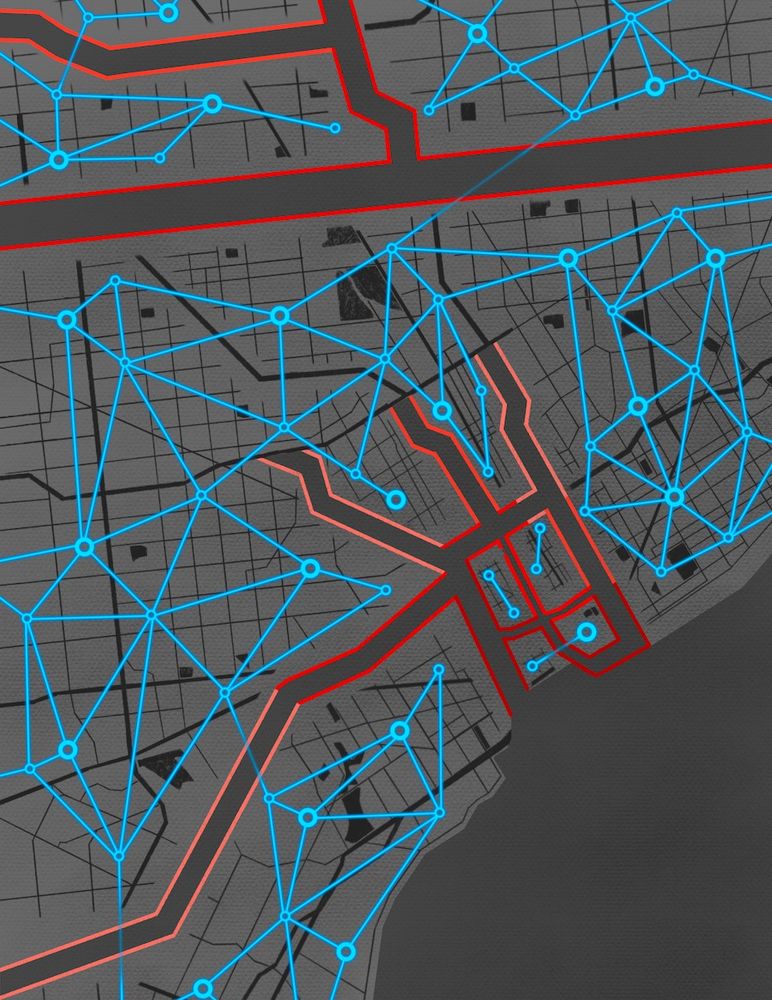Johannes Wachs
@johanneswachs.bsky.social
200 followers
280 following
19 posts
Researching social computing, crowds, and networks at Corvinus University of Budapest and HUN-REN CERS.
More at: https://johanneswachs.com/
Posts
Media
Videos
Starter Packs
Pinned
Reposted by Johannes Wachs
ANETI Lab
@anetilab.bsky.social
· Sep 4

Heat, health, and habitats: analyzing the intersecting risks of climate and demographic shifts in Austrian districts
Scientific Reports - Heat, health, and habitats: analyzing the intersecting risks of climate and demographic shifts in Austrian districts
rdcu.be
Reposted by Johannes Wachs
David Huang
@davidhuang.blog
· Jun 12

Who is using AI to code? Global diffusion and impact of generative AI
Generative coding tools promise big productivity gains, but uneven uptake could widen skill and income gaps. We train a neural classifier to spot AI-generated Python functions in 80 million GitHub com...
arxiv.org
Reposted by Johannes Wachs
Reposted by Johannes Wachs
Johannes Wachs
@johanneswachs.bsky.social
· Jun 11

Who is using AI to code? Global diffusion and impact of generative AI
Generative coding tools promise big productivity gains, but uneven uptake could widen skill and income gaps. We train a neural classifier to spot AI-generated Python functions in 80 million GitHub com...
arxiv.org
Johannes Wachs
@johanneswachs.bsky.social
· Jun 11
Johannes Wachs
@johanneswachs.bsky.social
· Jun 11
Reposted by Johannes Wachs
ANETI Lab
@anetilab.bsky.social
· Apr 29

The dynamics of leadership and success in software development teams - Nature Communications
Understanding how team dynamics impact performance in collaborative environments remains an open question. Here, authors use fine-grained activity data from software projects to characterize team evol...
www.nature.com
Reposted by Johannes Wachs
Lorenzo Betti
@loreb92.bsky.social
· Apr 28

The dynamics of leadership and success in software development teams - Nature Communications
Understanding how team dynamics impact performance in collaborative environments remains an open question. Here, authors use fine-grained activity data from software projects to characterize team evol...
www.nature.com
Reposted by Johannes Wachs
Reposted by Johannes Wachs
Reposted by Johannes Wachs
Reposted by Johannes Wachs
Reposted by Johannes Wachs
Reposted by Johannes Wachs
Eddie Lee
@spintheory.bsky.social
· Nov 7
Reposted by Johannes Wachs
Reposted by Johannes Wachs
